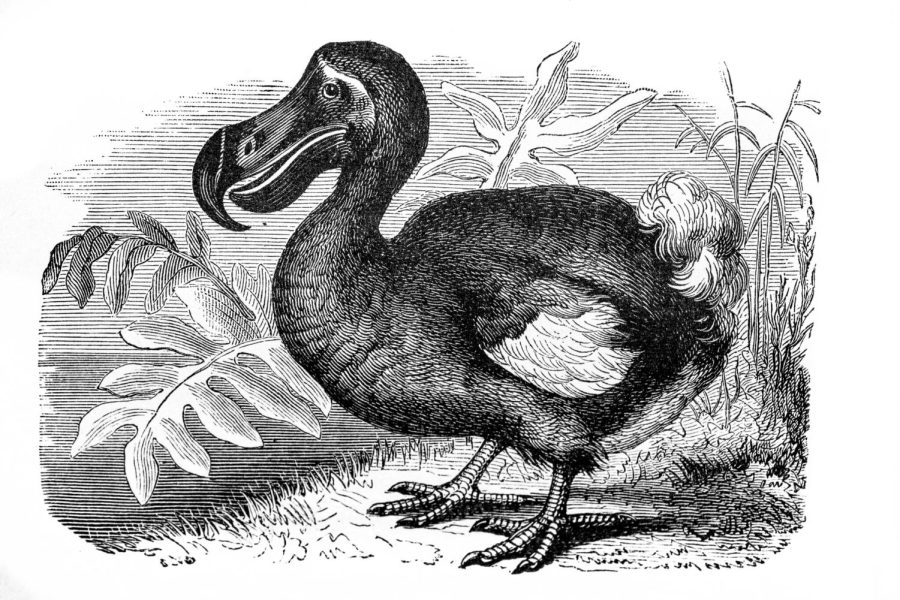The way of the dodo: Scientists need to continue the study of de-extinction
Getty Images
Scientists have been toying with the idea of bringing back the dodo bird through hybridization.
Less than 200 years after humanity stumbled upon its habitat in the Mascarene Islands, the dodo bird was completely lost. Today, the dodo is recognized as one of the most famous symbols of human-caused extinction, according to Britannica.
However, in recent years, scientists have been toying with the idea of bringing this bird, and other extinct species like it, back to life.
In 2009, a clone of the pyrenean ibex, a species that has been extinct since 2000, was successfully produced but only managed to survive a few minutes after birth before complications in her lungs caused her death, according to Forbes.
More recently, the process most scientists hope will return long-lost species is not cloning, but rather a form of hybridization. Since DNA collected from living tissue is required to create a clone, that process is not able to resurrect species that have been extinct for long periods of time.
Leading biologist of this issue and author of “How to Clone a Mammoth: The Science of De-Extinction,” Beth Shapiro has explained the method scientists are currently working with to return the mammoth, or at least, a creature part-mammoth, according to Smithsonian Magazine.
By understanding a species’ evolutionary lineage (as we understand the mammoth to be a close relative to modern-day elephants) and by having access to mammoth DNA, scientists can tweak elephant genes to more closely resemble their wooly cousins, potentially creating a hybrid similar to that original species.
In March 2022, Shapiro’s team also discovered a new specimen of dodo DNA, returning the idea of de-extinction to the public eye.
While many are skeptical, it is undoubtable the technology being developed in these experiments is incredibly important and needs to continue. The potential headway in studies of conservation and biodiversity, the measure of diverse life forms on planet Earth, is reason enough alone.
The World Wildlife Fund estimates we lose approximately 0.01% of species on Earth every year. For context, if there are 100,000,000 species on Earth, we lose 10,000 every year.
Beyond the obvious heartbreak, why is this severe loss so dangerous? It is directly linked to climate change.
Not only is climate change causing a loss of biodiversity, but a loss of biodiversity is causing climate change as well, according to the European Commission. Simply put, the more healthy the Earth’s ecosystems, which are dependent on the organisms within them, the more able the planet is to combat greenhouse gas emissions.
For instance, Mauritius Island, once the home of the dodo within the Mascarene Islands, was an evolutionary masterpiece prior to the arrival of humanity. Because the island was filled with endemic species (many of which are now extinct), Mauritius catered directly to those species. When one was lost, such as the dodo, every other species on that island, from the plants the dodo fed on to the other animals it shared the land with, were impacted as well, as was studied in Anthony Cheke’s 2008 publication “The Lost Land of the Dodo.”
With de-extinction, we may be able to return some of those original relationships and make for a healthier Earth. The healthier the Earth, the slower the rate of climate change, as explained by the European Commission.
Those opposed to de-extinction often fear it will detract necessary attention from currently endangered species.
This is a valid argument. The real reasoning for de-extinction needs to be addressed. In some sense, scientists will not be “returning” extinct species at all. While it is beautiful to imagine, the process of hybridization earlier described determines it is impossible to resuscitate any extinct species in its 100% original form.
Rather, scientists are toying with mammoth genes less for the mammoth and more for its descendants. The focus should remain primarily on those we have not yet lost.
Shapiro believes adding mammoth-like genes to elephant populations may provide natural characteristics that could help with survival and the onslaught of climate change, according to an NPR article.
Today, environmental and conservation justice is heavily intertwined with both social and food justice. From the disparity between the effects of climate change on different populations, as explained by the Pachamama Alliance, to the increasing insecurity of food climate change will cause, as explained by the United States Department of Agriculture, it is clear we are going to need far more than one solution. By continuing to develop the process of de-extinction, we bring awareness and funding, like what the Wilderness Society advocates for, to reviving lost species as well as to each of those issues.
We will need that increase of awareness and funding, as well as an increase of study. While the battle to preserve biodiversity is a one-thousand piece jigsaw, de-extinction could be one of the pieces.
Thus the potential is clear. With de-extinction, from the dodo to the mammoth, we offer our natural ecosystems back what we stole in the past. De-extinction will not serve as the complete cure for conservation or for saving the world’s biodiversity, but this is because there is no cure.
There is no single way to save this planet and to save the trillions of species that call it home. We have dug too deep of a grave to be able to clamber out so easily. However, with a multitude of solutions, and de-extinction among them, we just may fulfill our moral obligation to the dodo and all the lost life it represents.









